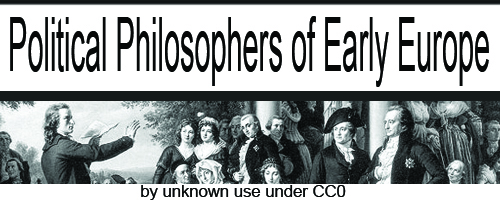Immanuel Kant
By: Courtney Reach
German philosopher Immanuel Kant was born in 1724. The term perpetual peace became acknowledged by Kant in his essay Perpetual Peace: A Philosophical Sketch. Kant’s essay is still relevant today and is the foundation for Peace and conflict studies.
Immanuel Kant published his Perpetual Peace essay in 1795. Kant focused on methods that he thought were essential for ending wars and creating world peace. Perpetual Peace is written in two parts; 6 preliminary articles and 3 definitive articles. The first six articles are steps that should be done immediately:
1. “No Treaty of Peace Shall Be Held Valid in Which There Is Tacitly Reserved Matter for a Future War”
2. “No Independent States, Large or Small, Shall Come Under the Dominion of Another State by Inheritance, Exchange, Purchase, or Donation”

by Kant, used under

Right: Translated Cover of Perpetual Peace
by Mary Campbell Smith, used under

3. “Standing Armies Shall in Time Be Totally Abolished”
4. “National Debts Shall Not Be Contracted with a View of the External Friction of States”
5. “No States shall by Force Interfere with the Constitution or Government of Another State”
6. “No State Shall, during War, Permit Such Acts of Hostility Which Would Make Mutual Confidence in the Subsequent Peace Impossible: Such Are the Employment of Assassins, Poisoners, Breach of Capitulation, and Incitement to Treason in the Opposing State” [1]
These six articles are negative laws that prohibit states from engaging in certain behaviors. These articles aim to reduce the likelihood of war [2].
The next 3 articles are used to build a foundation of peace:
1. “The Civil Constitution of Every State Should Be Republican”
2. “The Law of Nations Shall be Founded on a Federation of Free States”
3. “The Law of World Citizenship Shall Be Limited to Conditions of Universal Hospitality” [1]
These three definitive articles are used to bring about perpetual peace. “In a republican constitution, the people who decide whether there will be a war are the same people who would pay the price for the war, both in monetary terms (taxes and other financial burdens) and in flesh and blood.” [2]. This will cause Republican states to be cautious about going to war and will accept negotiations instead of war. This article is Kant’s most important contribution [2].

by Unknown 18th Century Artist, used under

Kant does not stress self-government; instead he classifies the government in two dimensions. The first type is “form of sovereignty” meaning who rules: one person, a small group of people, or all people. The second type is “form of government” meaning how those people rule: republican or dictatorial. Kant believed that all governments should be run by republican rule with one ruler. When it comes to voting, Kant believed that the person (only males) must own property or have some skill that can support them [2]. Kant did not believe women should have the right to vote. It is clear that Kant thinks an elective representative system is ideal. “Republican constitutions, he claims, are prone to avoid war because, when the consent of the people is needed, they will consider the costs they must endure in a war” [2].

by Unknown, used under

Kant’s Perpetual Peace essay is still relevant today because it is the foundation for Peace and Conflict studies. Peace and Conflict studies introduce students to the study of peace, conflict, and world order from social, economic, political, historical, and ecological dimensions [3]. They study Kantian Liberalism, which focuses on the Perpetual Peace essay. Perpetual Peace discussed the idea of a League of Nations to control conflict and promote peace. This was taken into consideration when the league of nations was formed after World War 1.
Kant, along with other European philosophers and politicians are revolutionary because they questioned the government and addressed the rights of the government. Kant’s perpetual peace helped to turn part of the world into a more peaceful land, until the League of Nations fell apart. Kant’s political philosophy is still used today and can be used to help promote world peace.
[1] Kant, I. (1795). Perpetual Peace: A Philosophical Sketch. Retrieved April 1, 2014, from Mtholyoke: https://www.mtholyoke.edu/acad/intrel/kant/kant1.htm
[2] Kant’s Social and Political Philosophy. (2012, April 19). Retrieved April 1, 2014, from Plato.Stanford.edu: http://plato.stanford.edu/entries/kant-social-political/#RepEnlDem
[3] Univeristy of California, B. (2011). Peace and Conflict Studies. Retrieved April 1, 2014, from Berkeley.edu: http://iastp.berkeley.edu/pacs
